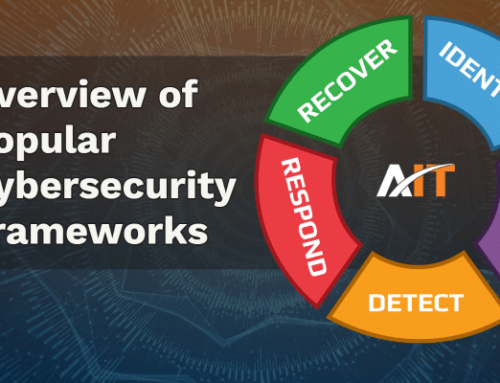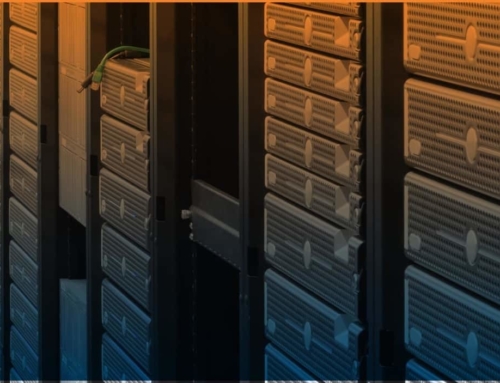This article will explore the most commonly asked questions about the dark web and offer insights on how to prevent your organization’s data from ending up there.
What is the dark web?
The dark web and the deep web are terms that are often used interchangeably. The deep web is everything on the internet that is not indexed in search engines. This can include data like health records, confidential web pages, fee-based content, membership-based websites, et cetera. Basically, anything that is not findable via Google or other search engines. If you have ever logged into Netflix to watch a movie or signed into Amazon to place an order, then you have been exposed to the deep web. The deep web makes up about 96%-99% of the internet.
On the other hand, the dark web is estimated to make up about 6% of the internet, and it is a subset of the deep web. In order to access the dark web, users need specific authorization, configurations, or software. Most people in the know associate the anonymizing browser, Tor, with dark web use. Tor makes it possible for dark web users to access buried dark web pages that end in “.onion” while keeping their location and other identifying data private while conducting transactions.
Though about 97% of dark web activity is legal (for example, BlackBook, the “Facebook of Tor”), the dark web is primarily known for that other 3%, cybercrime and anonymously conducting illegal business. The dark web is the gateway to buying and selling stolen data, credit card numbers, drugs, weapons, counterfeit money, software that helps hackers break into other people’s computers, and the list gets worse from there.
Will the dark web ever be shut down?
This is an impossible question to answer, however in recent news, one of the world’s largest illegal markets on the dark web, DarkMarket, was recently shut down by an international group of law enforcement agencies from Australia, Denmark, Germany, Moldova, Switzerland, Ukraine, the United Kingdom, and the United States. The dark web still exists, but one major site, what many experts believe to be the world’s largest illegal marketplace, has been taken down. Unfortunately, however, it’s just the marketplace that has been shut down, not the users and vendors. Law enforcement officials believe that they have the information needed to track down some of the illegal buyers and sellers from the shutdown of DarkMarket, but the results of this remain to be seen.
Who created the dark web?
According to the International Monetary Fund (IMF), the dark web was created by several researchers who were involved in a US Department of Defense project to create a secret, hidden network for protecting US spy communications. This DOD network never came to fruition, but the researchers applied their project momentum to create “The Onion Router,” also known as Tor. The name references the multiple layers, like an onion, of encryption and anonymization.
Different sources cite different intentions for the creation and release of Tor, a nonprofit and free download. The IMF states that it was developed to protect human rights and privacy activists from the surveillance of authoritarian governments. According to The Guardian, however, Tor was intended to protect individual data from corporations, not governments. Regardless of the initial intent, the unintended consequence of this “radical anonymity” allowed by the Tor browser and the creation of the dark web is that it is also used to cloak illegal activity.
When was the dark web started?
The anonymizing browser Tor was launched in 2002. It was created by researchers involved in a US Department of Defense project in the late-1990s. Since the creation of Tor, other dark web networks have emerged, for example, the “Invisible Internet Project,” also known as “I2P.”
How does the dark web affect my organization?
The dark web has opened up myriad opportunities for enterprising cybercriminals. When most people think of cybercriminals and hackers, they imagine a disenfranchised genius in a dark room wearing a hoodie. The truth is, it does not take high levels of genius to exploit the opportunities that the dark web presents. Cybercriminals with access to private records and data can anonymously sell this information on illegal dark web marketplaces that connect buyers and sellers. They can even go to one of these marketplaces to buy ransomware kits and other types of hacking software. This means that cybercriminals don’t even have to know how ransomware or other types of hacking software work; they can just find an opening in your network, install illegal software purchased from the dark web in a few clicks, and suddenly your company’s data is at risk of being sold to the highest bidder, being held for ransom, or both.
How do I keep my organization’s information off of the dark web?
Securing your organization’s information and networks is critical. The most common weakness in an organization’s information security is a lack of security awareness on the part of the organization’s staff. Lax password security is the #1 vulnerability in most organizations. To keep your organization’s data and networks protected, you need security awareness training paired with network security and backup and disaster relief solutions.
We have created a free IT Security Checklist that you can use to get started to improve the information and network security in your organization.
Looking for additional IT security support?
We help our customers improve all areas of security with scalable solutions so that they can attain high productivity levels for their teams while keeping costs under control.
For a free consultation and IT security assessment, please contact us today. We know what it’s like to run a business, and we know your time is valuable.
We can:
- Learn about your business
- Give you some ideas on what improvements you can make right away
- Provide free advice on your approach to IT security
And if you’d like, we can show you where and how we can help.





